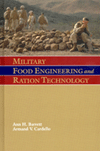
John C. Oleson, president and chief engineer, Stainless Motors Inc., Rio Rancho, NM
That was the theory, anyway, when engineers at Beef Products Inc. (BPI) challenged motor makers in 2006 to submit a bid to build a 100hp water-cooled motor fabricated in stainless. After some prodding, Stainless Motors Inc. accepted the challenge. The New Mexico machine shop, which had never built a motor larger than 30hp, had supplied pharmaceutical manufacturers with small water-cooled motors, though those applications were driven by considerations other than energy recovery. Scaling up to what turned out to be a 400hp motor and overcoming some unanticipated challenges proved daunting and required three trials. But by November 2007, the firm succeeded in building the first of 11 compressor motors that since have run at cooler temperatures and generated tens of thousands of dollars worth of hot water.
John C. Oleson drove the project. A licensed professional engineer in California and New Mexico, Oleson is Stainless Motors’ founder and president, though his business card identifies him as the chief engineer. A graduate of California Polytechnical State University in San Luis Obispo with a degree in mechanical engineering, Oleson previously worked as a design engineer for a biologics company, leading a team that developed a patented bottle-cutting and emptying machine for Alpha Therapeutic Corp. Recognizing a niche for stainless steel motor components, he started his company in 1988 in Los Angeles, machining components and eventually entire motors before moving his 18-employee company to the Albuquerque area in 2003.

Drawing heat out of a stainless steel motor is a challenge, but pulling it into a water medium and then reusing the hot water results in happy bearings and 100% efficiency. Source: Stainless Motors Inc.
Oleson: They wanted a 400hp stainless steel, water-cooled motor that could run at 4200 rpm-that was it. We knew their exacting standards and that we’d have to assume all the R&D risk, but BPI had a need, they knew us, and they had confidence that I could make it work. There’s a 16-26 week lead time to make a motor that size in cast iron, but none of the big manufacturers were interested in doing it in stainless for sanitary and washdown conditions.
BPI has 11 400hp motors in a compressor room, and in the summer, bearing failures went from months to weeks, despite training 3hp blowers on them. It takes about eight hours to change out the bearings in a motor that size, so they really had a need. They initially asked us to machine a 100hp motor, then insisted on delivery of a 400hp motor first, so we made a deal to test one live on one of their compressors.
FE: What was the biggest challenge at the outset?
Oleson: I was relatively naïve, and the only thing that bothered me was the motor size. We worked with SKF on the bearings, and that wasn’t a problem, but I underestimated the difficulty of getting the heat out of the motor. For the first trial, we tried scaling up the design of our smaller motors, and that didn’t work. The bearings and windings ran too hot. We didn’t understand how much heat the rotor generates and how to get it out. Tricky design changes had to happen to get out enough of the rotor heat.
FE: How did you finally resolve the issue of rotor-heat removal?
Oleson: The solution was finned cooling coils that wrap the areas where the heat is. How we split the flow for improved water passage and then recombine it at the discharge was the design that made it come together.
After the second trial, RTD sensors showed us what was going on with temperatures and flow. It took two-and-a half months to source fabricators, retool, assemble, test, then bring the motor back to Dakota Dunes, SD.
FE: So condition monitoring is being done?
Oleson: There are RTDs in contact with the bearing casings, six RTDs in the winding, and if they needed vibration monitors, we could do that. If and when those motors fail, they will know well in advance. The thinking is, put in the instrumentation and walk away; unless the computer spots an anomaly, you leave the motor alone.
The first motor has been running 13 months without dropping a bearing. At 160


